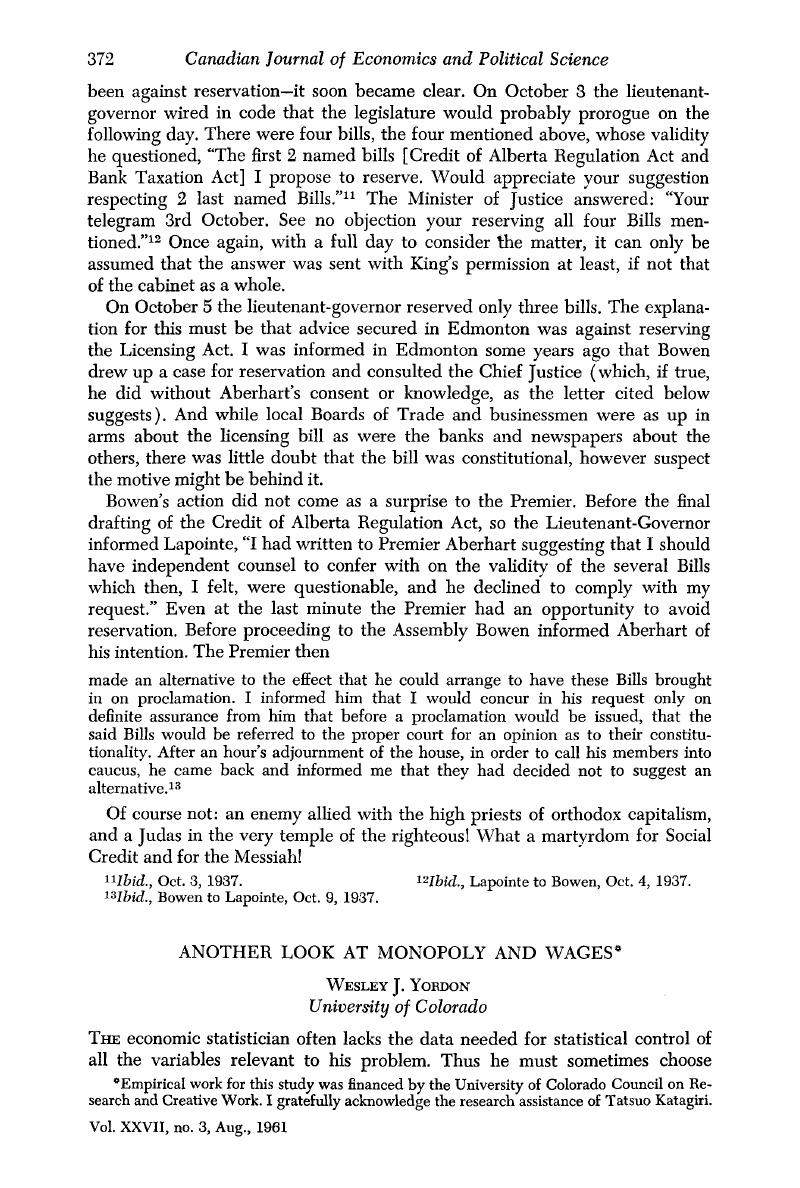No CrossRef data available.
Article contents
Another Look at Monopoly and Wages*
Published online by Cambridge University Press: 07 November 2014
Abstract

- Type
- Notes and Memoranda
- Information
- Canadian Journal of Economics and Political Science/Revue canadienne de economiques et science politique , Volume 27 , Issue 3 , August 1961 , pp. 372 - 379
- Copyright
- Copyright © Canadian Political Science Association 1961
Footnotes
Empirical work for this study was financed by the University of Colorado Council on Research and Creative Work. I gratefully acknowledge the research assistance of Tatsuo Katagiri.
References
1 Schwartzman, D., “Monopoly and Wages,” this Journal, XXVI, no. 3, 08 1960, 428–38.Google Scholar
2 Among others, this view has been expressed by Clark, John M. in The Wage-Price Problem (American Bankers Assoc., 1960), 29–30 Google Scholar, and by Otto Eckstein and Gary Fromm in US Congress, 86:1, Joint Economic Committee, Study of Employment, Growth, and Price Levels, Study Paper no. 2 (Washington, 1959).Google Scholar
3 Schwartzman, , “Monopoly and Wages,” 434.Google Scholar
4 Ibid., 438.
5 Ibid., 437.
6 E.g., if these industries are excluded, the mean for Group C rises to .85, which is statistically significant, permitting rejection of the null hypothesis. See ibid., 437, 435.
7 Bain, Joe S., Barriers to New Competition (Cambridge, Mass., 1956).CrossRefGoogle Scholar
8 Kaysen, Carl and Turner, Donald F., Antitrust Policy (Cambridge, Mass., 1959)CrossRefGoogle Scholar, Methodological Appendix. Their classification distinguishes two types of concentrated industries, but the difference in wages and wage movements between these two is so small that the distinction has not been preserved in this report. The direction of the differences is consistent with the conclusions reported below.
9 Ibid., 27.
10 Ibid.
11 Ibid., 27-9, 295-321.
12 Ibid., 297-8.
13 Ibid., 296.
14 See correlation reported by Garabino, J. W. in “A Theory of Interindustry Wage Variation,” Quarterly Journal of Economics, LXIV, no. 2., 05, 1950, 302.Google Scholar




